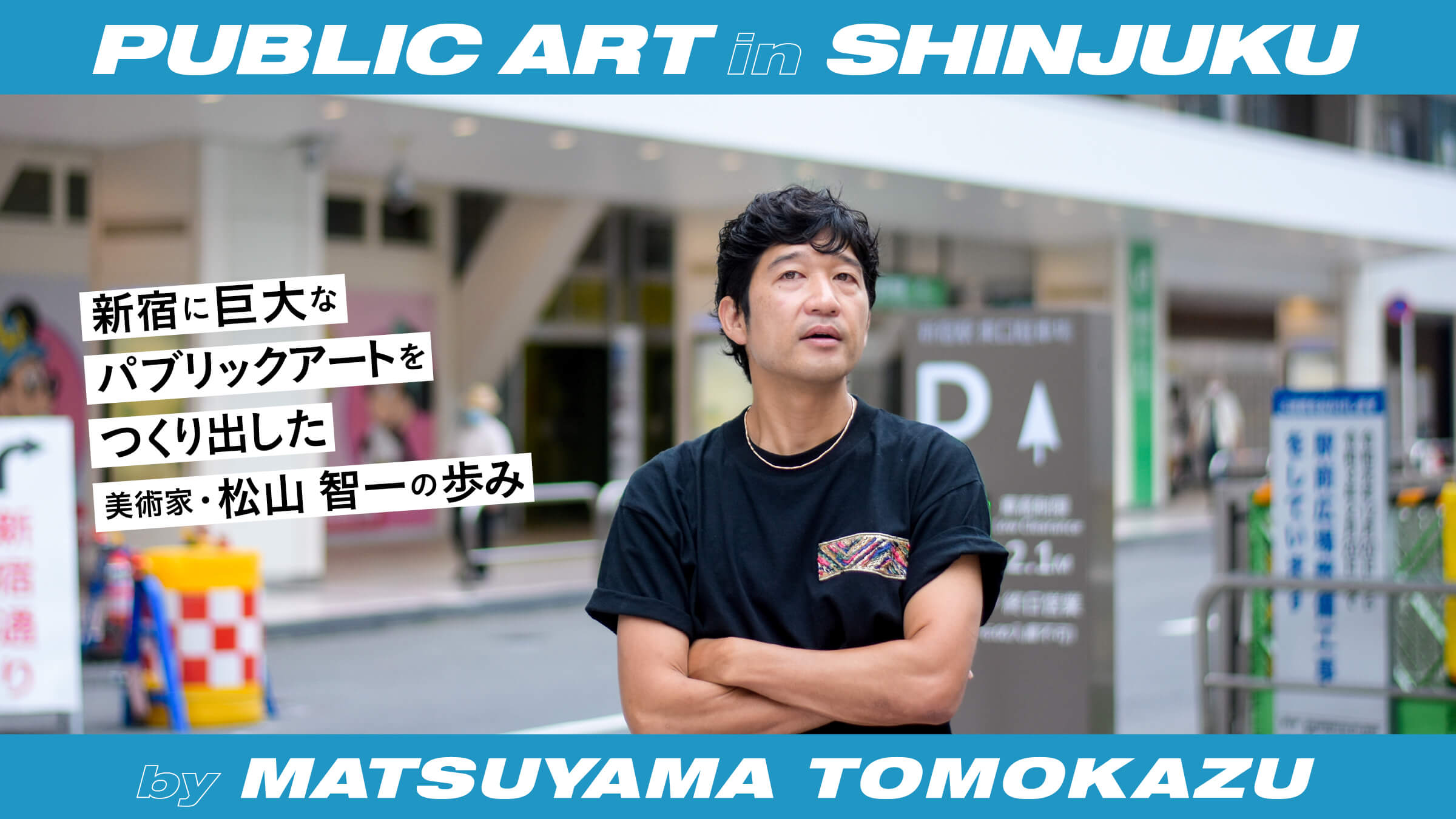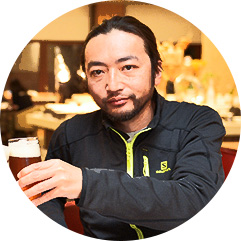It is important that it feels very foreign and at the same time familiar to the place.
What exactly did you mean by "a work that includes the surrounding environment" in this project?
Matsuyama:Shinjuku is a city with a truly diverse mix of cultures, and the area around the roundabout is particularly densely populated, surrounded by multi-tenant buildings. I started by thinking of these areas as keywords. My works often combine opposites into one and layer them, and since I like such things, I thought that by mirroring the monument as a whole, I could incorporate the surrounding scenery itself, such as these multi-tenant buildings, into the work. In addition, I also projected various colored elements, such as advertising billboards, onto the ground. What happens when I do this is that the cluttered scenery of this roundabout gradually becomes more organized. For example, the colors of the Alta and Kanefuku signs are all incorporated here, and I created the work with the image that the work and the surrounding area would come to harmonize with this location as a starting point. Then, even though this huge monument space suddenly appeared in front of the station, it naturally blended in with all the scenery that came into view. It feels very foreign, yet it fits in. That is the kind of worldview we were aiming for.
(While walking around the rotary with Mr. Matsuyama) I see. This space itself feels strange, but it blends in naturally with the scenery, and it gives me a somewhat strange feeling.
Matsuyama:In addition to this, the monument itself has been crafted in a variety of ways. Specifically, I am mixing botanical prints used in fashion textiles, patterns used in Buddhist sculptures from the Kamakura period, wallpaper patterns from medieval Europe, and I am also incorporating patterns that can be used line-sense free within Google. By layering these parts that have been used in different times, in different spaces, and with different values, I hope to express the mix, the hustle and bustle, the chaos, the diverse values, and the people with diverse backgrounds that exist in this city of Shinjuku.



Art in a place where everyone can see and visit without hesitation.
It's like a huge conceptual installation that you see in museums.
Matsuyama:In the first place, there were people who wondered what it would be like to put an art piece in such a chaotic place. I was honestly of the opinion that it would look better if it were placed in a pure white box, like in an art museum. For example, this may sound a bit crude, but if you put it in a plain white box, like in a museum, it would naturally look cool. Just by placing it there, you can give it meaning. But in the case of this place, you really have to re-edit the place itself to make it shine. So, if we could transform the unique smell of this place into a "fragrance," it would blend in with its surroundings and stand out in a good way. The figures, interwoven with various historical elements, will greet all the people who live, work, and go to school here in Shinjuku, those who are attracted to the area, and those who come to visit from home and abroad. With these images in mind, we constructed the theme of this monument.
Hanao-San" is the name of the project.
Matsuyama:We Japanese like to name our meeting places "Hachiko" or "Moyai Statue. But I thought there were not many places like that in Shinjuku. Even though it is in front of Alta, it is a large area, and there are too many people passing by, so it is not a place where you would want to spend a long time. Also, recently, many people from overseas usually add "~SAN" to their e-mails and so on. So, while taking both of these into consideration, I thought an iconic name would be good. That was my intention when I dared not to use a contemporary art-like name. I wanted it to be more of a public art. I would be happy if the name "Hanao-san" takes root in the public space.
It is true that it is like an adjective, and somewhat familiar.


Matsuyama:Also, at night, the monument itself is very beautiful with the surrounding lights and neon lights, so I would like visitors to visit the monument at night as well. I visited the monument myself at night soon after it was opened to the public, and I saw a couple sitting there happily talking to each other. I was so happy to see them. If people who come and go in Shinjuku can continue to live their daily lives in this place, that is the ideal I would most like to see. Personally, I recommend entering from the Isetan side of the building and looking at the monument from there, as it makes each detail of the monument stand out and gives it more power.
I think you want it to blend in with the Shinjuku Station location.
Matsuyama:That's right. I moved to New York at the age of 25 by myself, and although I was beaten to a pulp, I have managed to exhibit my works at large, well-known galleries and museums. I think of the greatness of paying to see art, and at the same time, the tightness I feel about it. It was significant for me to be able to participate in such an essentially public initiative and to be able to leave behind a tangible legacy. It is a big slogan and theme for me to do this kind of public work.

I want people to know what it means to build infrastructure with art.
What is your ideal, what are you aiming for in the future?
Matsuyama:With the creation of this space, we have a large conduit for people. Before, there was no such a line, and when it was dark at night, there was a dark atmosphere. In short, new value begins to be attached to the land. Some people say, "This kind of art is not worth money," but they are completely wrong. That is the kind of culture I want to deliver and convey, and I want everyone to be aware of it. I want people to be aware of this. If they are aware of this, not only from a purely aesthetic point of view, but also from an economic point of view, more and more art will be created in the city. I seriously believe that it is possible to improve the infrastructure through this kind of culture, and in the U.S. and Europe, it is recognized as a matter of course. That is what I am aiming for with public art.
In other words, having art in the city will bring economic benefits as well.
Matsuyama:The economy and culture should become closer in that sense, and we need more and more people to become aware of this. I believe I have a responsibility for that. If art is there, cultural power takes root in the area, and the image of the area is enhanced, the value of the land will inevitably increase. If more infrastructure can be created through art, the world will become a more interesting place. This is the true potential of art in a larger sense: one piece of art can change people and change a city. Even if the creation of infrastructure itself is only one result, the possibilities that extend beyond that are endless. Art can create that opportunity. That is what I want to realize. The world is becoming increasingly difficult to see the future due to the Corona disaster, but I believe that it is precisely because we are in the midst of such a situation that we can propose something to society. Above all, artists like us have ideas and energy, so we are good at dealing with situations like this.









